

Stenhousemuir
Formed
1884. Wound up May 1919
Reconstituted May 1919
Founder member of the re-formed Scottish Division Two 1921
Kit History
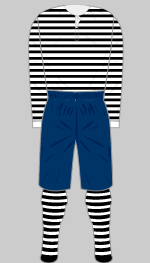
1883-1886 a
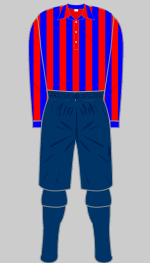
1888-1891 a
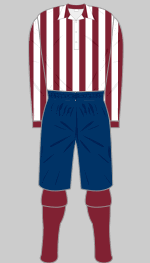
1891-1900 a
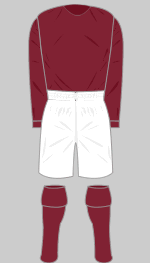
1900-1901 a
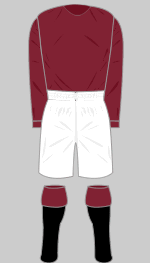
1901-1902 a
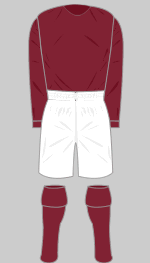
1911-1912 b
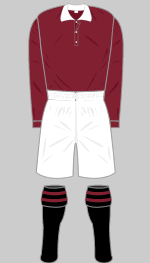
1912-1913 a
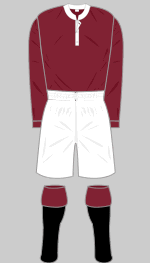
1920-1921 a
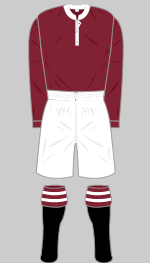
1925-1926 a
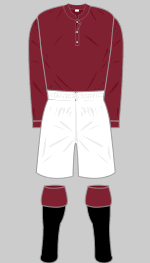
1927-1928 a
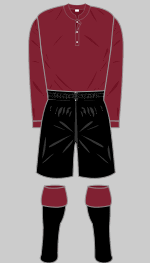
1927-1929 away
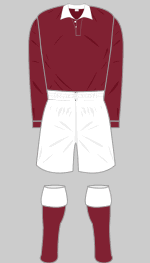
1930-1931 k
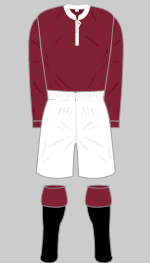
1932-1935 a
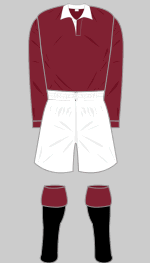
1936-1939 a c
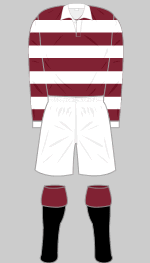
1945-1946 m

1946-1948
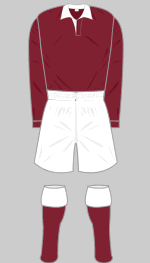
1948-1956 a c
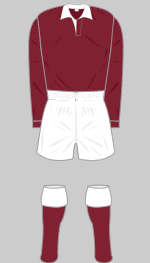
1956-1959 a
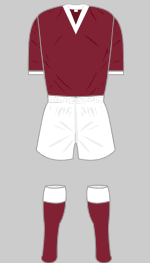
1959-1964 a
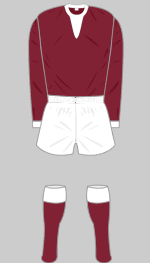
1963-1964 a k
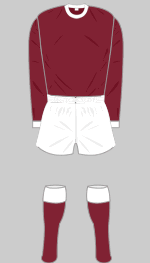
1964-1969 a
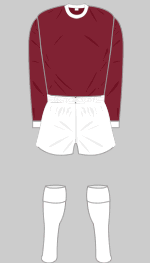
1969-1977 a j
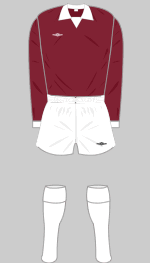
1977-1978 m
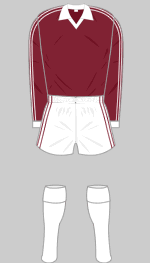
1980-1981 a
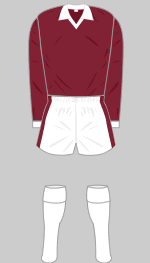
1981-1982 m
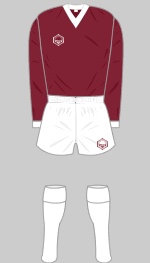
1982-March 1983 a j
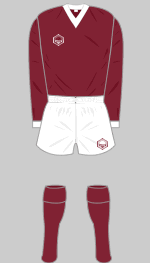
Apr-May 1983 a
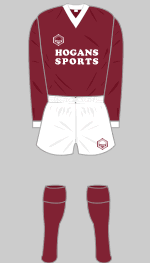
Aug-Dec 1983 a j
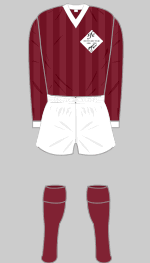
Dec 83-Feb 84 a
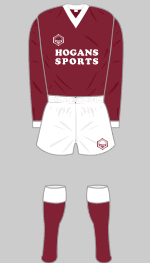
March 1984 a
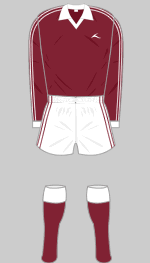
Apr-May 1984 a

Aug-Dec 1984 a f j
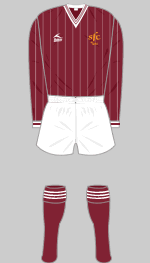
Jan-May 1985 a
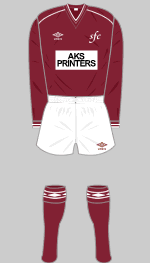
1985-1986 a g
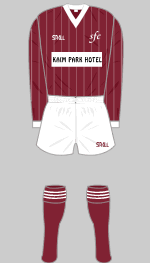
1986-1987 a g j
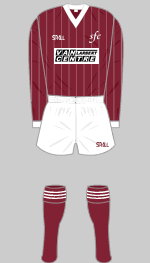
1987-1988 j
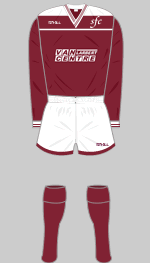
1988-1989 j m
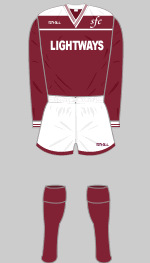
1989-1991 j
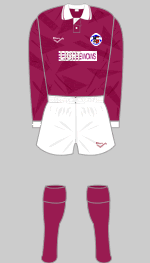
1991-1993 e j
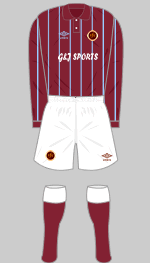
1993-1995 e j
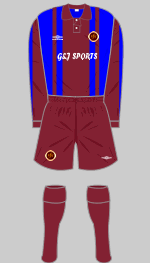
1995-1996 e j
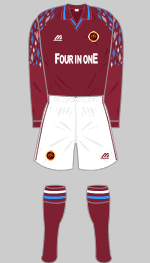
1996-1998 j
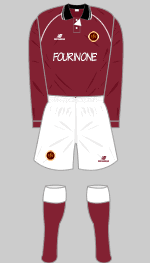
1998-1999 e j
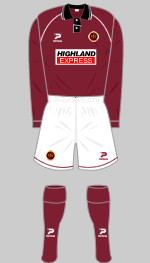
1999-2000 e j
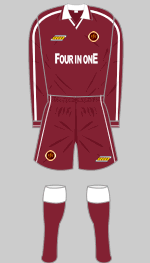
2000-2001 e j
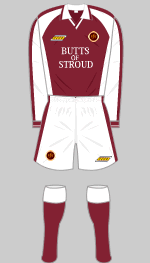
2001-2002 e j
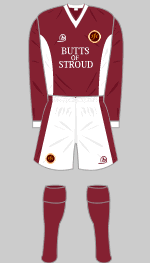
2002-2003 j l
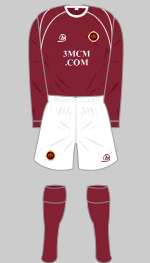
2003-2004 e
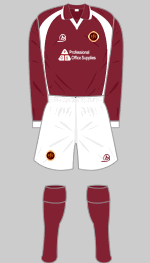
2004-2005 e
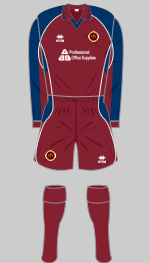
2005-2006 e
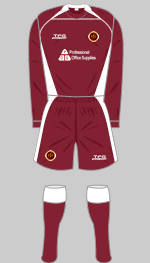
2006-2007 d e
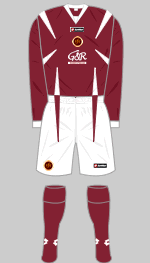
2007-2008 d
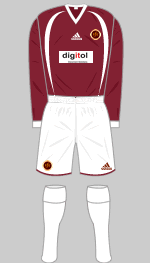
2008-2009 h i
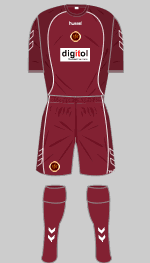
2009-2010 d
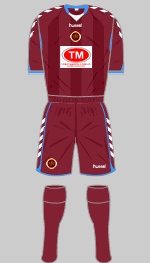
2010-2011 j
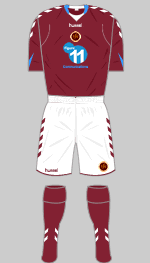
2011-2012 d
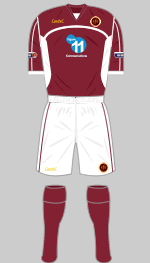
2012-2013 d
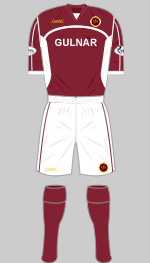
2013-2015 d
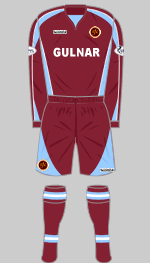
2015-2017 d
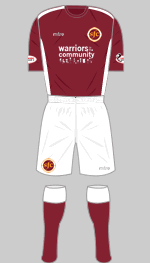
2017-2019 d
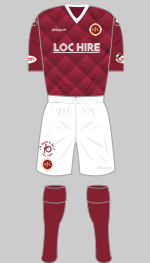
2019-2021 d
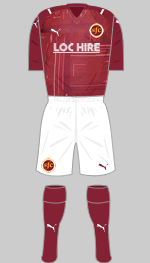
2021-2023 d
Background
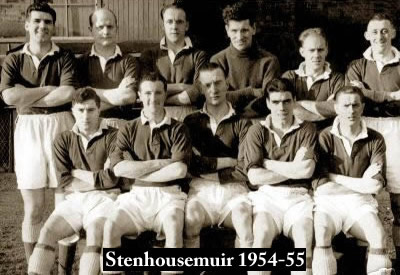 Stenhousemuir is a small town in Scotland’s
central belt, an area that is teeming with football clubs. Formed in
1884 by a group of young men who broke away from a junior side called
Heather Rangers, the club moved into Ochilview Park in 1890. They became
known as “The Warriors” in the late 1880s but the reason
for this is now lost.
Stenhousemuir is a small town in Scotland’s
central belt, an area that is teeming with football clubs. Formed in
1884 by a group of young men who broke away from a junior side called
Heather Rangers, the club moved into Ochilview Park in 1890. They became
known as “The Warriors” in the late 1880s but the reason
for this is now lost.
They joined the Midland Central League in 1893 and enjoyed some success in the early years of the twentieth century, winning the Qualifying Cup twice (1901, 1902) and reaching the semi-final of the Scottish FA Cup in 1903. In 1909 they joined the old Central League where they competed until it was suspended in 1915.
On 3 May 1919, according to a report in the Falkirk Herald*, a public meeting was convened in the Shepherds' Hall, Stenhousemuir, to discuss the club's mounting debts. After "a long and animated discussion, the meeting decided to start on an entirely new footing," thus avoiding liability for the debts incurred by the old club. A new committee was elected and the chairman anounced that the owners of Ochilview Park had agreed to lease the ground at a reduced rent while one Mr Weir provided "two sets of jerseys and a number of footballs" at a discount. The attitude of the club's debtors was not recorded.
After the war ended former members of the Scottish Second Division reformed the Central League as a rival competition to the Scottish League with Stenhousemuir among them. In 1921 this competition was incorporated as the new Scottish Second Division. The Warriors managed to finish in fourth place in 1924 and then three times in succession (1931-1934) but otherwise had an undistinguished career.
In 1928 a new stand was built after the old wooden structure was destroyed by fire. Shortly before it was finished, it was realised that the architect had omitted to include access stairways and these had to be hastily improvised.
Stenhousemuir were not active during the Second World War but they did participate in the Scottish Southern League B Division in 1945-46. In the Victory Cup, organised in April 1946, they wore hooped jerseys against Rangers but it is unclear if these were worn in Southern League games as well..
In 1946, Stenhousemuir were placed in Division
“B” (the new name for the old Second Division). They narrowly
missed out on promotion in 1959 and 1961 but they usually finished near
the foot of the table. 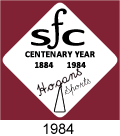 When the league was restructured in 1975 with
the creation of the Premier Division, Stenhousemuir were placed in the
new Second Division (third tier). In 1996 the club won their first senior
trophy (excluding the nine Stirlingshire Cups they have won over the
years), beating Dundee United on penalties for victory in the League
Challenge Cup.
When the league was restructured in 1975 with
the creation of the Premier Division, Stenhousemuir were placed in the
new Second Division (third tier). In 1996 the club won their first senior
trophy (excluding the nine Stirlingshire Cups they have won over the
years), beating Dundee United on penalties for victory in the League
Challenge Cup.
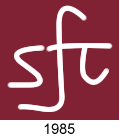 To mark the club's centenary in 1984 a rather curious crest was adopted. More a patch than a badge, it included the name of their sponsor, Hogan Sports who supplied their kit at the time. This was worn for the first two months of 1984 and reappeared at the start of the following season and was worn until the end of December 1984.
To mark the club's centenary in 1984 a rather curious crest was adopted. More a patch than a badge, it included the name of their sponsor, Hogan Sports who supplied their kit at the time. This was worn for the first two months of 1984 and reappeared at the start of the following season and was worn until the end of December 1984.
The centenary badge seems to have inspired the board to make more of an effort and in 1985 a 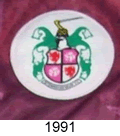 novel cypher appeared for the first time. This remained until 1991 when an heraldic crest was adopted. This does not seem to have won favour and lasted just two seasons before a very smart new badge was introduced. This revived the previous cypher but now in a much more elegant cursive script.
novel cypher appeared for the first time. This remained until 1991 when an heraldic crest was adopted. This does not seem to have won favour and lasted just two seasons before a very smart new badge was introduced. This revived the previous cypher but now in a much more elegant cursive script.
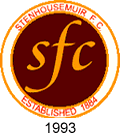 Stenhousemuir languished in Division Two until
1998 when they were relegated to the Third Division (fourth tier). The
following season they won their first ever promotion but in 2004 they
were back in the basement. In 2009 they were promoted once more.
Stenhousemuir languished in Division Two until
1998 when they were relegated to the Third Division (fourth tier). The
following season they won their first ever promotion but in 2004 they
were back in the basement. In 2009 they were promoted once more.
In November 2009 Stenhousemuir became the first football club in Scotland to become a Community Interest Company (CIC). No doubt the board took note of 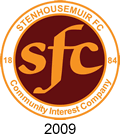 the tribulations of their near-neighbours (and now tenants at Ochilview), East Stirlingshire, who had been driven to the point of extinction by their previous chairman. CIC status prevents the club being taken over by people who do not have the interests of the club at heart and protects it from asset stripping. The Supporters' Trust now hold the largest shareholding but profits are not paid to shareholders and directors receive no salaries. The new status allows the club to apply for grants to provide community facilities. The change was reflected in the redesigned crest.
the tribulations of their near-neighbours (and now tenants at Ochilview), East Stirlingshire, who had been driven to the point of extinction by their previous chairman. CIC status prevents the club being taken over by people who do not have the interests of the club at heart and protects it from asset stripping. The Supporters' Trust now hold the largest shareholding but profits are not paid to shareholders and directors receive no salaries. The new status allows the club to apply for grants to provide community facilities. The change was reflected in the redesigned crest.
Sources
- (a) Alick Milne
- (b) Ayr United FC - Images of Sport (Duncan Carmichael 2002)
- (c) London Hearts
- (d) Stenhousemuir Official Site
- (e) SNS Pix
- (f) Classic Kits
- (g) Ralph Pomeroy
- (h) St Johnstone Official Site
- (i) Elgin City Official Site
- (j) Donald Gellatly
- (k) Keith Ellis
- (l) Stefan Cooper
- (m) Ian McConnel
- (*) Falkirk Football Historian
Crests are the property of Stenhousemuir FC.